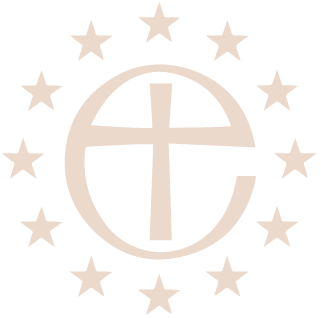
2nd Sunday of Easter 2018, John 20, 19-end
Revd. Canon Leonard Doolan
Most people I know enjoy a good read. Books will never die out. I know there is now kindle but nothing will ever replace that sense of connection you get when you touch a book’s pages, occasionally have to fumble to turn a page, forget the page number you stopped at, or find that your page marker has fallen out.
When we read a book we rarely expect to be told by the author that what you are reading is not the whole story. How frustrating would that be!
Yet, this is what we are being told this morning by the writer of the 4th Gospel, known to us as St. John. Despite telling us so much about the life of Christ he almost ends his book by telling us that he hasn’t included everything. I wonder what has been missed out! Water is turned into wine; paralyzed people walk; he feeds five thousand people from a few loaves; a blind man receives his sight; a dead man called Lazarus is raised form the dead; wisdom and teaching transform peoples situations and restore people to physical and spiritual health; and as if this were not enough despite dying himself, God raises him and he walks away leaving behind an empty tomb. So many signs and wonders.
Yet it is not everything that Jesus did!
The writer of the gospel clearly thought he had recorded enough information to win us over – yes, to persuade us – because that is what the whole purpose of John’s writing is. His gospel is to persuade us that the person he is writing about is the Messiah, the Christ of God. He begins his gospel by telling us what he will tell us. He continues his gospel by telling us. He ends his gospel by telling us what he has told us. What a clever writer, what a persuasive writer this man John really is.
All through his work he is showing us the proof of his basic purpose. He tells us about how people don’t believe, yet come to believe through God’s actions and in the teaching of Christ ; how we don’t recognize him, yet when we see a sign or a miracle, we believe; how we sit in darkness, but the light has come into the world.
He develops his theme as he writes, and in what we hear today he has come full circle. If you have read about Jesus Christ, who is Shepherd, Gate, Vine, Bread, Way, Truth, Life, Resurrection but still have not yet come to believe, we have today the final piece of evidence.
The risen Christ is in the presence of the disciples and grants them the gift of the Holy Spirit. This is St. John’s feast of Pentecost – not 50 days after the resurrection, but immediately after it. All the disciples are there – all receive, all believe. Yet one is missing.
He is called Leonard, Nigel, Lynn, Sue, John, Trevor, Virginia, Maurice, Janet, Christina, Margaret, Linda, James, Jennifer, Anne, Magdalene, George – in the story the name of the missing person is Thomas – but in reality it is every name I mentioned and every other name.
Thomas is not present to receive the liberation of the Holy Spirit, that gift of God’s anointing. He is therefore a reluctant disciple. He is not a bad man, but simply a man who wants evidence that Jesus has risen from the dead.
Jesus, offering his peace to them again, offers it also to the missing disciple. Here is the evidence that Thomas needed – but it is not in some extraordinary act that would blow anyone’s mind away – no – Jesus just says to him, as he says to all of us, here are my wounds, it is me. The risen Jesus is the wounded and crucified Jesus – just believe.
So the missing disciple – you choose the name that you wish to put into the text – simply says of the wounded, crucified and risen Christ, My Lord and my God.
Bingo! John’s gospel has come full circle. He begins by telling us that the Word of God becomes flesh in Jesus, develops and expands on that, and ends with you, me, the reader, Thomas, accepting that Jesus is our Lord, but not only that. He is God.
I wonder what else John could have included. The mind boggles.


No Comments